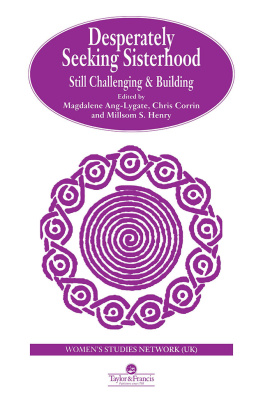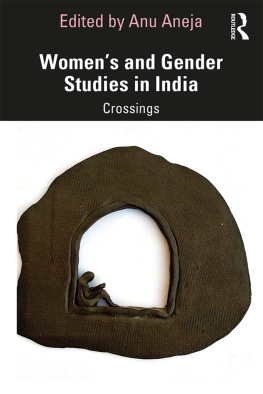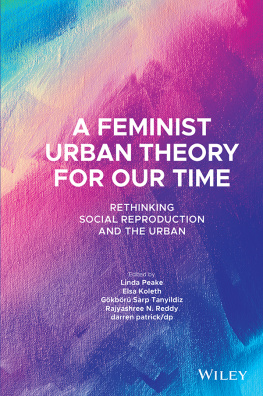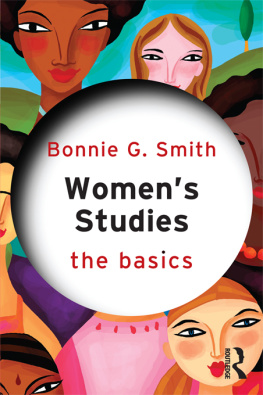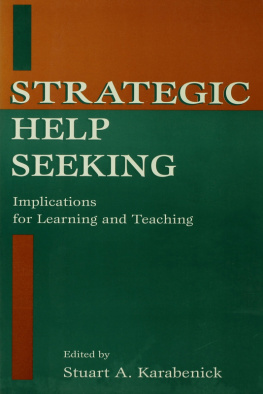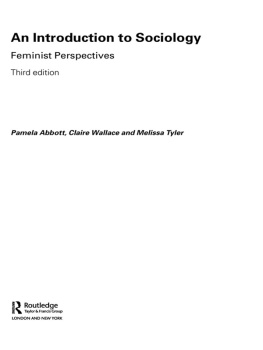Desperately Seeking Sisterhood
Desperately Seeking Sisterhood: Still Challenging and Building
Edited by
Magdalene Ang-Lygate, Chris Corrin and Millsom S. Henry
Selection and editorial material copyright Magdalene Ang-Lygate, Chris Corrin and Millsom S. Henry, 1997
All rights reserved. No part of this publication may be reproduced, stored in a retrieval system, or transmitted, in any form or by any means, electronic, mechanical, photocopying, recording, or otherwise, without permission in writing from the Publisher.
First published 1997
By Taylor & Francis,
2 Park Square, Milton Park, Abingdon, Oxon OX14 4RN
Transferred to Digital Printing 2004
A Catalogue Record for this book is available from the British Library
ISBN O 7484 0409 0
ISBN O 7484 0410 4 (pbk)
Library of Congress Cataloging-in-Publication Data are available on request
The WSNA (UK) 1995 Annual Conference logo, used on the front cover design of this book, was designed by Scottish artist Jan Sutherland who described it as a symbol representing women's sisterhood. The spiral which begins 'just before midnight' captures a sense of beginning and yet each turn of the spiral brings us to a familiar but different place. Based on an ancient Celtic motif, the thirteen moons are intricately interlocked. They symbolize the beauty and magic of women working together in spite of their different perspectives and seasons in life. Special thanks to Jan for her permission to use the logo for the cover of this book.
Typeset in 10/12 pt Times
by Best-set Typesetter Ltd., Hong Kong
In Memoriam: Joy Gardner 19531993
Contents
Magdalene Ang-Lygate, Chris Corrin and Millsom S. Henry
Ailbhe Smyth
Felty Nkweto Simmonds
Annette Kilcooley
Diane Richardson
Renate Klein and Susan Hawthorne
Sharon Tabberer
Usha Brown, Clara Connolly and Pragna Patel
Susan Hart
Celia Jenkins, Maggie O'Neill and Ruth Swirsky
Pamela Cotterill and Gayle Letherby
Cathy Lubelska and Julie Matthews
Yvon Appleby
Robyn Rowland
Anne Gatensby and Nora Jung
Marilyn Poole, Dallas Isaacs and Judy Ann Jones
Christine Zmroczek and Pat Mahony
Quibilah Montsho
Guide
The authors wish to give thanks to all the contributors, present and silent, for their efforts and patience over the past year. In addition, we would like to thank all the conference staff, our hardworking volunteers, all participants and the University of Stirling for helping to make the Desperately Seeking Sisterhood Conference such a success. This book has emerged from the conference papers, plenaries and contributions.
We also wish to thank those at Taylor & Francis who worked to very tight deadlines to enable the publication of this volume, in particular Alison Chapman and Fiona Kinghorn.
Finally, but by no means least, we would like to acknowledge both the challenges and the opportunities raised for us by being part of a collective that attempted to be sisterly in practice as well as in theory.
MagdaleneAng-Lygate,ChrisCorrinandMillsomS.Henry
This book was engendered by the Eighth Annual Women's Studies Network (UK) Association Conference - Desperately Seeking Sisterhood: Still Challenging and Building - which took place in Stirling in June 1995. The Conference was organized to provide a forum where different aspects of feminist scholarship and work could be elaborated, reviewed and explored around notions of 'sisterhood'. As conference organizers, it was also our intention to create a space which would place an equal emphasis on theory, practice and campaigning, where contemporary issues that concerned women could be addressed from the various perspectives held by feminist academics, practitioners and activists. Feedback received from conference participants suggested that those primary objectives had been achieved. When the opportunity materialized to compile a conference volume for publication, it was interesting that as co-editors we each had to work through our own commitments to 'sisterhood' - to continue to work together not only to produce a book for publication but to do it in such a way that lessons in sistering were neither lost nor ignored. Issues of respect - respecting women's words and ways of expression, respecting women's time and commitments - and listening were all aspects of our work together.
Sistering is hard work, much harder than organizing a conference or editing a book because it asks that our more familiar feminist critical stance an odd combination of arrogance and defensiveness - be tempered with self-awareness and a caring affection. We learn much about ourselves in our working coalitions with other women, in testing the boundaries of our sisterhoods and in attempting to extend them.
Given our collective commitment to feminist praxis and to fostering new ways of feminist thinking, it was not surprising that a book such as this would result. What you will not find here is a defence of the viability of the notion of a single sisterhood, nor a series of neat chapters explaining theories of sisterhood, nor feminist strategies for the next century. Instead, what follows is a diverse collection of ideas about the largely taken-for-granted concept of 'sisterhood', most of which was explored during formal and informal conference sessions. Each of the four parts contains accounts of the powerful impact that women have on, and for, one other. In this sense, sisterhood can never be a theoretical concept for us, as we practise sisterhood in many avenues of our lives and work. Yet the appreciation and celebration of diversity in sisterhood cannot be realized without first acknowledging and analysing the differences that lie between us. Accordingly, at risk of appearing contradictory or incoherent, the contributions in this volume seek to reflect the many voices that are raised as the worlds of sisterhoods collide and coalesce.
The three aspects of campaigning, theory and practice arose from our core belief in feminism as a praxis, building theory from women's experience and using theory to change practice. This may be apparent in the ways in which we practise our politics, in policy-making circles, in the ways we relate to each other and/or in what and how we teach in Women's Studies and elsewhere. The avoidance of a paper-thin sisterhood, as insubstantial as the pages within which it is conceptualized, is a very real challenge for Women's Studies in the years ahead. It is in this belief and insistence that sisterhood is not an option for feminists that we reflect on the key issues of sameness, difference, collaboration, connectedness and ethical considerations around power. These reflections could enable us to recognize and respect different positions and situations, re-search and re-state representations of our theories and practices, challenge power imbalances and prejudices and work in coalitions to generate progressive change for women.
Part I Sistering: Sameness and Difference
This part is full of questions: 'Can we be sisters in the skin?', 'Who are the sisters?', 'Must I call every woman sister?' While sistering involves at the outset a recognition of our 'sameness' - where as women we have commonalities in our skins - there must also be a shared recognition and understanding of our 'differences'. Ailbhe Smyth's eloquent and effervescent opening piece outlines the complex nature of 'sisterhood'. In posing the question 'Can we be sisters in the skin?', Ailbhe expresses her own vision of sistering and sisterhood as one where the hurts of betrayals, confusion, ignorance and indifference have not been allowed to quench her desire that we, as feminists, continue to choose to grow together. This contribution provides an excellent context for the next two chapters. Felly Nkweto Simmonds and Annette Kilcooley offer us their detailed scrutiny of difference in terms of 'race' and gender. Felly focuses on the question 'Who are the sisters?' as she examines the relationship between difference, feminism and friendship. For her, the notion of 'sisterhood' has blurred and dominated the nature of feminism and friendship at both a political and a personal level. This contribution reminds us all that 'sisterhood should evolve through our actions not just words', because some differences between 'sisters' are based on power inequalities and unexplained advantage. Felly argues that sisterhood as a political stance is suspect, unless those sisters who enjoy privileges denied to other sisters are seen to share the responsibility of dismantling such differences. Annette describes a set of circumstances where the relations of power, gender and race have combined to create a series of incidents which have had devastating consequences for Black people and Black women in particular. Annette points out that notions of sisterhood can change dramatically from one site of conflict to another and warns against a feminist solidarity that is unaware of 'racism and signifiers of "race" as complicating variables between white women'. It is clear that we all need to ask difficult questions of ourselves and our 'sisters'.


